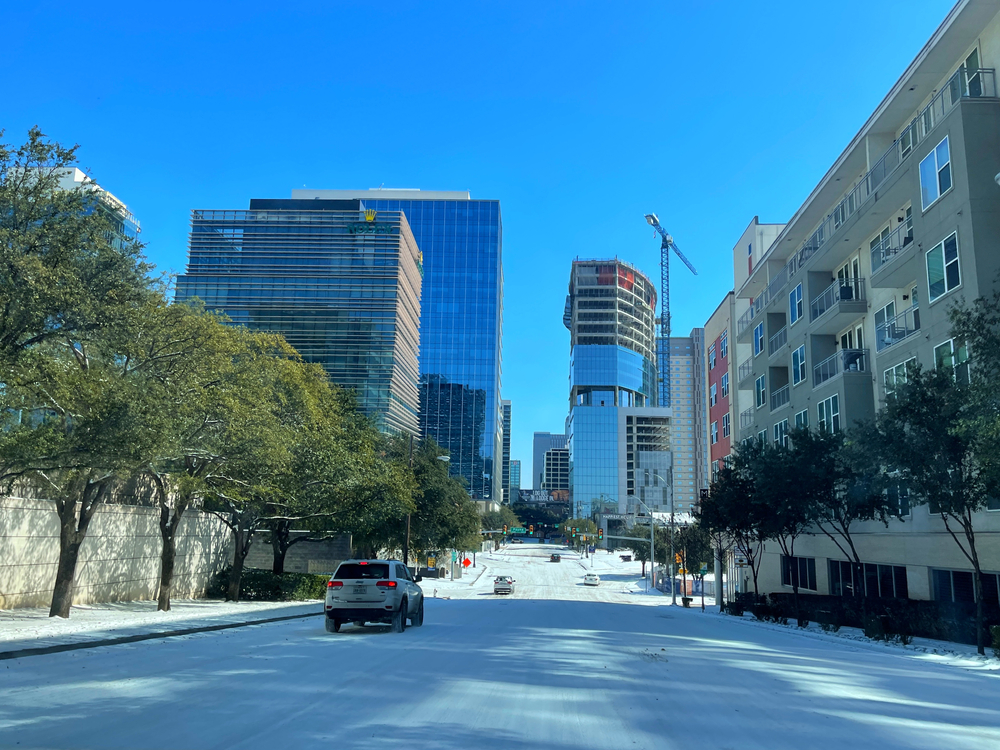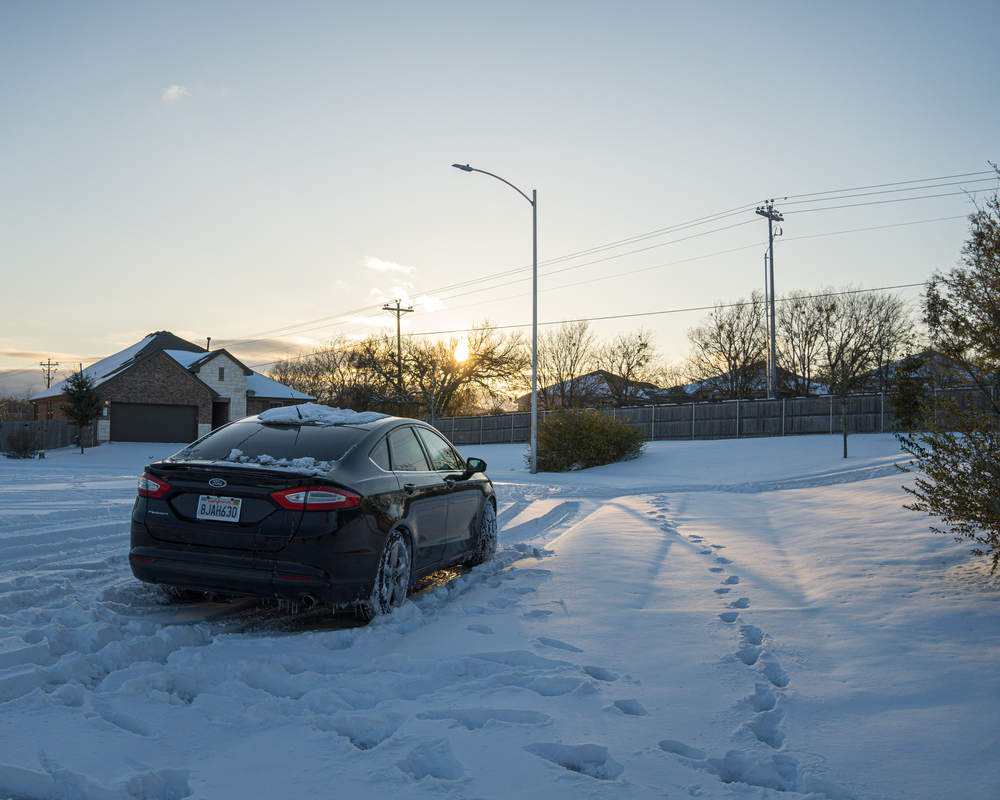Your first reaction to this blog post might be…huh? It’s Texas we’re talking about, right? Unless there’s a seasonal risk of tumbleweeds blowing across freeways or hitting roadrunners who aren’t road-running fast enough, why do we need to read on? How risky can it be driving in Texas in February?
You might be surprised.
In February 2021, the state of Texas faced an unprecedented cold snap that caused massive problems across the board, but even before that event, drivers in North Texas were used to seeing ice, rain, and yes, even snow, during winter months.
We have some tips and suggestions to help you stay safe while driving in the Lone Star State this winter. Being prepared always helps – and that includes making sure your car insurance is up to the task.
But first…
Does Texas Really Get Snow?
You bet it does!
And it shouldn’t be all that surprising if you think about it. Texas is a vast land–larger than any European nation, and with one ranch that’s larger than the entire state of Rhode Island. It’s got climates and topography beyond mere deserts. There are snow-capped mountains, lush forests, coastal beaches and plains, prairies, and swampland.
And yes, plenty of that real estate gets at least some snow. While many parts of Texas get an inch or two of fluff, other areas get considerably more. The United States, on average, gets 28 inches of annual snowfall. You won’t find nearly that much here, but Amarillo, in the Panhandle, gets about 18 inches not that far off.
Heck, even Houston has had some noteworthy winter storms.

Why is Winter Driving So Dangerous to Texas Drivers?
It isn’t the fact that there’s a lot of snow here that causes problems for native drivers – and, as a result, visitors and tourists. The danger is just the opposite: when motorists who aren’t used to snow and ice come upon the threat unexpectedly and don’t know how to drive in that kind of weather, bad stuff happens.
While you read on for the driving tips that just might keep your car on the road during the winter months in Dallas and other points in this spacious state, it’s also worth considering what might happen if you don’t get so lucky.
You could end up stranded many miles from help on a low-visibility day or cold and lonely night. Take a look at the many features and benefits of roadside assistance coverage – which costs pennies per day – and think about how it might save you (or your teenage driver?) from that fate.
So What Precautions Should We Take Driving in Texas Winters?
Obviously, the winter driving threat in the Lone Star State isn’t anything like what the good folks in Minnesota, Montana, or Alaska face just about every day for half the year or more. On the other hand, those Northern drivers have the experience to drive safely when road conditions take a seasonal turn for the worse.
So, we offer these tips to lower the risk and keep you safer in such weather.
- Know what to expect. That means watching or reading weather reports before getting on the road. Forewarned is forearmed.
- Stay off the road if you can. Easier said than done. We know, we know. But if you do have the freedom of not driving when winter road conditions are at their worst, use that freedom to stay safe and not add to the problem.
- Slow down. Posted speed limits cover ideal driving conditions, but snow and ice demand more reaction time.
- Stay back. It’s recommended to put at least three times the usual gap between your car and the one ahead of you when driving at highway speeds in wintry weather. When roads are clear, drivers should follow a “three-second” rule, which means counting off three seconds between the driver ahead passing a milestone and you doing the same. So when driving on snow or ice, that count should go up to nine.
- Avoid hard braking. The temptation, when you feel your vehicle start to swerve or shimmy on an icy road, is to slam on the brakes. Avoid the temptation if you can. Instead, get your foot off the accelerator and near the brake so you’ll be ready to use it if you must. But try to steer into the swerve and coast out of the challenge if you can. That will make it less likely that your ride spins totally out of control.
- Watch out for stopped or slowed vehicles. Even if you’re doing everything right, there’s no guarantee that everyone else is doing the same. Other cars could be stranded on the road, or there could be slow-moving snow plows or emergency vehicles responding to accidents. Remember, braking might be a problem, so stay back and remain alert.
- Respect the ice potential. Even if you don’t see the slippery stuff, it might still be underneath your tires. And remember, bridges and shady pavement, such as underpasses, can ice over even when the road is otherwise dry. When it’s dark or visibility is low due to snowfall, it’s extra easy to miss telltale signs of ice. So pretend all road surfaces are slick when the weather turns. Better safe than sorry.
- Pack a storm survival kit. If despite your best efforts, you still end up at the side of the road with a disabled vehicle and the snow flying, you might be in trouble. As vast as the state is, you could be far from the nearest tow truck or police post. And if the storm is widespread, the cops and tow truck operators might already have their hands full.
That’s why you need to pack a storm survival kit for such emergencies. Decide for yourself what one should include, but we’d recommend a phone charger, water bottles, crackers, power bars or other dry food, a flashlight, road flares, and a warm blanket. You might think of other must-haves, but these are a good start.
Call Baja Auto Insurance for Answers Any Season
The curse of winter driving won’t be on your mind for much of the year, but you’ve got other questions, concerns, and coverage needs. Reach out here to contact Baja Auto Insurance for cheap car insurance quotes in Dallas, Texas, or wherever you live in the Lone Star State.
We welcome your call at (800) 401-6870 or visit us in person.
However you reach out, you’ll be rewarded with highly affordable car insurance that meets the coverage needs of you or your family regardless of where or when you’re driving in Texas.






Follow us: